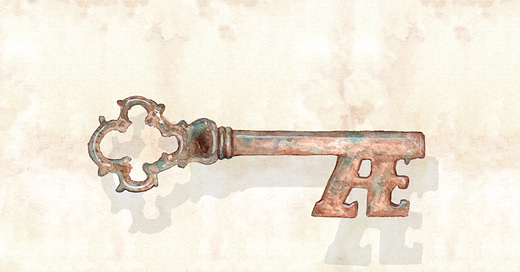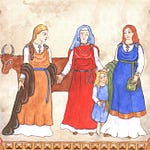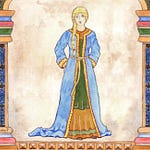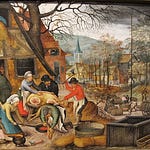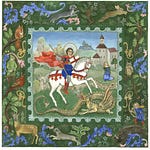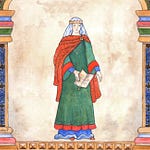Women and Easter in Early Medieval Northumbria
For western Christians, today is Easter Sunday, when the resurrection of Jesus is celebrated. During the period covered by this newsletter (roughly 600-1100), the dominant religion in England was Christianity, so for most people in England in this period, Easter would have been the most important event in the religious calendar. Early medieval Northumbria was the site of the Synod of Whitby, which decided when Easter was to be celebrated - a decision in which prominent Northumbrian women were involved. It is also where the Ruthwell Cross comes from, a stone carving which includes many women and an inscription of a poem from the point of view of the cross used to crucify Christ, in a northern dialect. Read on (or listen on!) for more about women and Easter in early medieval Northumbria - including a translation of this very cool Old English crucifixion poem into modern Yorkshire speak.
Easter’s ‘Pagan’ Origins?
There has been some speculation about the origin of Easter being in pre-Christian practices. The conversion to Christianity began around 600, though some non-Christian beliefs and practices did prevail alongside Christianity. It’s often said that the word ‘Easter’ comes from the name of the ‘pagan’ goddess Eostre, who was associated with hares - hence the Easter Bunny. This story originates with our old friend Bede, the eighth-century Northumbrian historian, who tells us that:
Eosturmonath has a name which is now translated ‘Paschal month’, and which was once called after a goddess of theirs named Eostre, in whose honour feasts were celebrated in that month. Now they designate that Paschal season by her name, calling the joys of the new rite by the time-honoured name of the old observance.
Eostre is not mentioned in any other source about pre-Christian belief, and while it is not unusual for our only record of something historical to come from Bede, this doesn’t provide a watertight origin for the term. As for Eostre’s association with the Easter Bunny/Hare, this was first speculated by Jacob Grimm in 1874 and has no earlier precedent. A much larger myth about the pagan goddess Eostre has been speculated since this point, incorporating eggs as well as bunnies, but much of it originates in modern New Age books, and returning to the historical source of this myth reveals it has very little substance.

